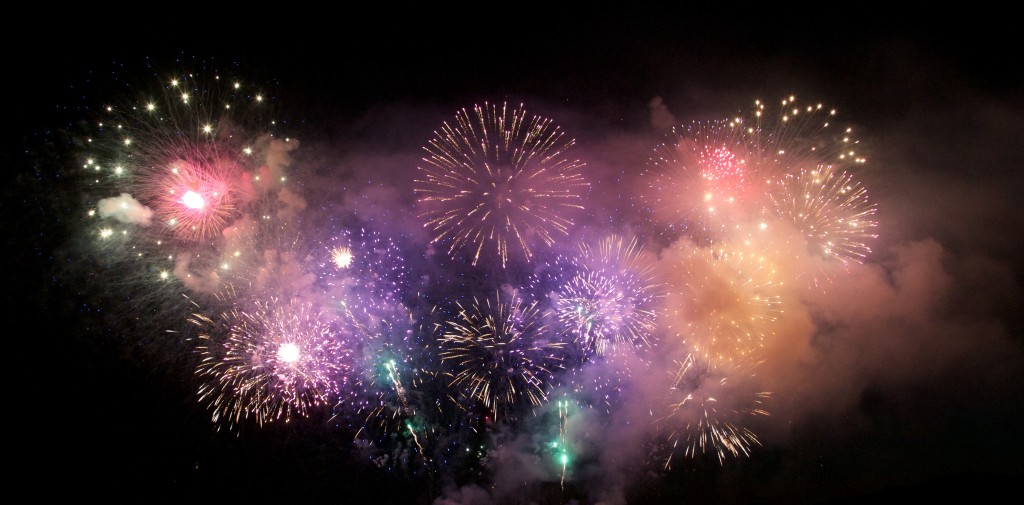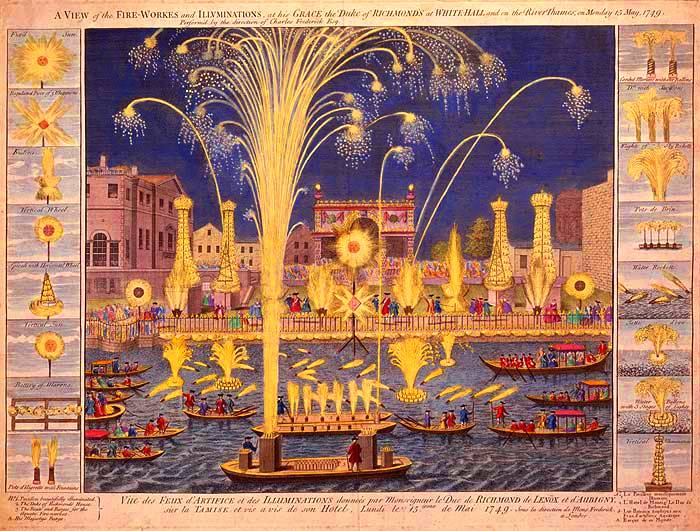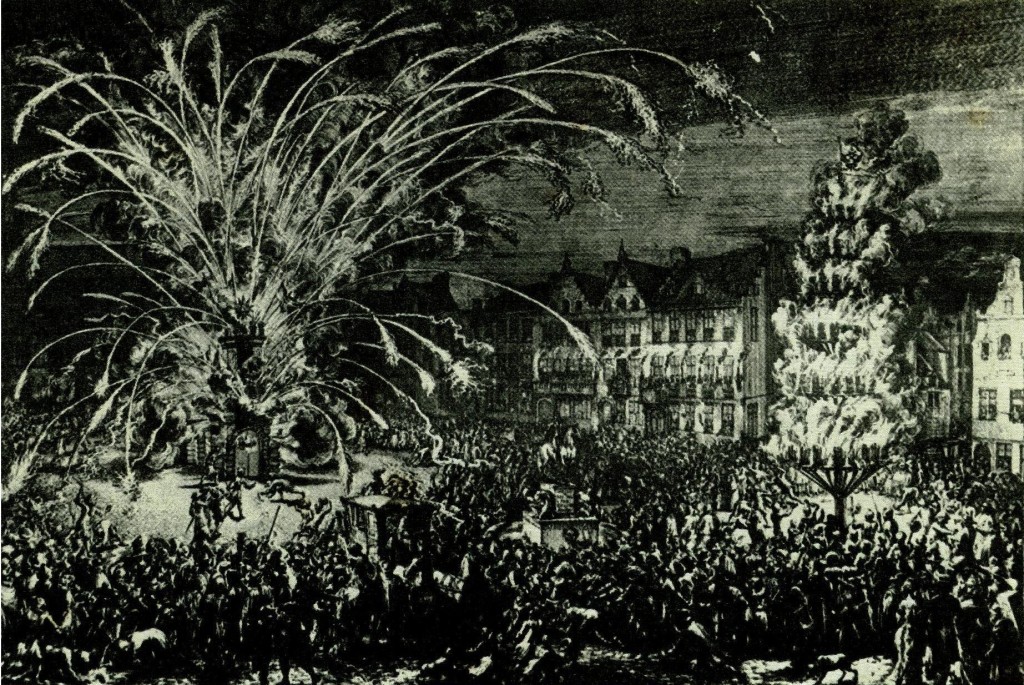History repeating……

In Britain, we associate fireworks with Bonfire Night, in France they’re used to celebrate Bastille Day and we all know how much Americans love fireworks to celebrate every occasion, but have you ever wondered how the first firework was created? We all enjoy a good fireworks display; it’s one of the few things in today’s modern world that still has the power to bring us together as a community. Despite most of us thinking that fireworks were invented to celebrate Bonfire Night, their history goes back thousands of years and is far more exciting than you can imagine!
A happy accident
The first mention of a firework comes from China, about 2000 years ago. There’s a legend that a Chinese chef accidentally knocked some saltpetre into a cooking fire, which caused an interesting flame not seen anywhere else, and in an act of pure serendipity, invented the firework. Saltpetre was used as a flavouring salt and is still an ingredient in gun powder. Along with saltpetre, other gunpowder ingredients, such as sulphur and charcoal were commonly found around ancient cooking fires. This mixture of ingredients produced an extremely beautiful flame in a fire and would explode if placed into a bamboo tube.
Between 960 and 1279, in the Song Dynasty in China, exploding firecrackers were produced by Li Tian, a Chinese monk, near the city of Liu Yang in the Hunan Province. They were designed to be detonated at the beginning of the New Year in order to scare away evil spirits, and were made by filling bamboo shoots with gunpowder.
Nowadays we focus on the shapes and colours of being the most important part of a firework, but in medieval China, they focused on the loud noise for early religious fireworks (known as ‘bian pow’ or ‘gung pow’), as this was essential for scaring away the evil spirits.
By the time of the 15th century, fireworks are recorded being used in a wide range of celebrations, including weddings and military victories. Whilst we see the birth of the firework in China, the modern firework that’s we recognise was most likely invented in India or the Middle East.
Gunpowder
Gunpowder, also known as black powder, is one of the most important discoveries in human history, changing everything from war to infrastructure. Whilst it can be used as an explosive, it’s far more commonly used as a propellant. Since the 9th Century it was made by mixing saltpetre, sulphur and charcoal; the charcoal often came from the willow tree, but a number of other woods have been used, including:
- Pine cones
- Elder
- Grapevine
- Laurel
- Hazel
More recently, sugar has been used as an alternative to charcoal to act as the fuel component in fireworks and other pyrotechnics.
When these ingredients are carefully ground together, a powder called ‘serpentine’ is created. Due to these ingredients needing to be mixed before they’re used, gunpowder was extremely dangerous to make without modern safety measures.
Chinese arrows
As well as using gunpowder as an explosive in their firecrackers, the Chinese utilised gunpowder combustion as a propellant. In 1279, the Chinese used hand-carved wooden rockets, in the shape of dragons, to shoot rocket powered arrows at the Mongol invaders.
Explorers of the time took their knowledge of gunpowder and rocket powered arrows back home with them, with records in the Middle East talking of Chinese arrows as far back as the 7th century.
Along with the crusaders, Marco Polo is widely credited with bringing gunpowder (and fireworks) to Europe in the 13th century.

Fireworks in Europe
By 1377, fireworks we being used in the bishop’s palace at Vicenza to accompany a religious mystery play. Soon, fireworks were regularly used in the representation of angels or the Holy Spirit, as a way to demonstrate them ascending to Heaven or descending to earth.
A couple of centuries later, the popularity of fireworks had increased exponentially and they were commonly used for both military purposes and in peacetime. Spain and Italy in particular started using firework displays as part of numerous outdoor celebrations. Vannoccio Biringuccio, an Italian metallurgist described the festivities in Florence and Siena for feast days as including whirling, decorated wheels that had been packed with fireworks suspended from ropes as entertainment.
A cause for celebration

Over time, fireworks were used more often to celebrate great events. From the late part of the 15th century (and even to this day), fireworks at Italy’s Castel Sant’Angelo have been used to celebrate the election of a new pope. Descriptions of the fireworks in the late 15th century stated that the finale of rocket fireworks “Constructed so that after they have moved upwards with a long tail and seem to be finished they burst and each one sends forth anew six or eight rockets”. It was definitely a world changing experience for those who saw it, with the fireworks being compared to the fires of hell or the heavens coming down to earth.
Moving into the 16th century, fireworks were being used for festivals throughout northern Europe with a large variety in the styles of firework display. They were mainly spectacles designed for the nobility and royalty, celebrating their actions and adventure, using elaborate scenery with monsters, castles and a wide range of pyrotechnics.
The coronation of Anne Boleyn in 1533 was celebrated with a “great red dragon continually moving and casting forth fire” and a host of “wild men” on barges in the Thames, wielding fire-clubs. Her daughter, Elizabeth I greatly enjoyed firework displays throughout her reign.
In Germany, fireworks were used to create pyrotechnic pantomimes, with giant dragons and fire-spouting whales engaged in mock battles. In France, however, they enjoyed fireworks that resembled stars and the sun, lions to represent the constellation Leo and many other astrological inspired displays.
These magnificent firework displays could cost a fortune to create and were a source of both marvel and terror- for many people firework displays remained a novel experience.
Modern firework displays
The 1800s saw an end to the kind of courtly politics and extravagant displays due to more of a focus on economising pyrotechnic displays, leading to simple displays of coloured light in the 20th century. Today, however, we see fireworks fairly regularly often, so it takes a lot to impress us. Fireworks set to music, designed to create letters, numbers and shapes, as well as lancework and firerope.
At Alchemy Fireworks, our experienced team of pyrotechnic technicians will work with you to ensure you have everything you need for an exceptional firework display. To find out how Alchemy Fireworks can take your display into the next age, call us today on +44 (0)8000 66 58 37 or contact us online.

